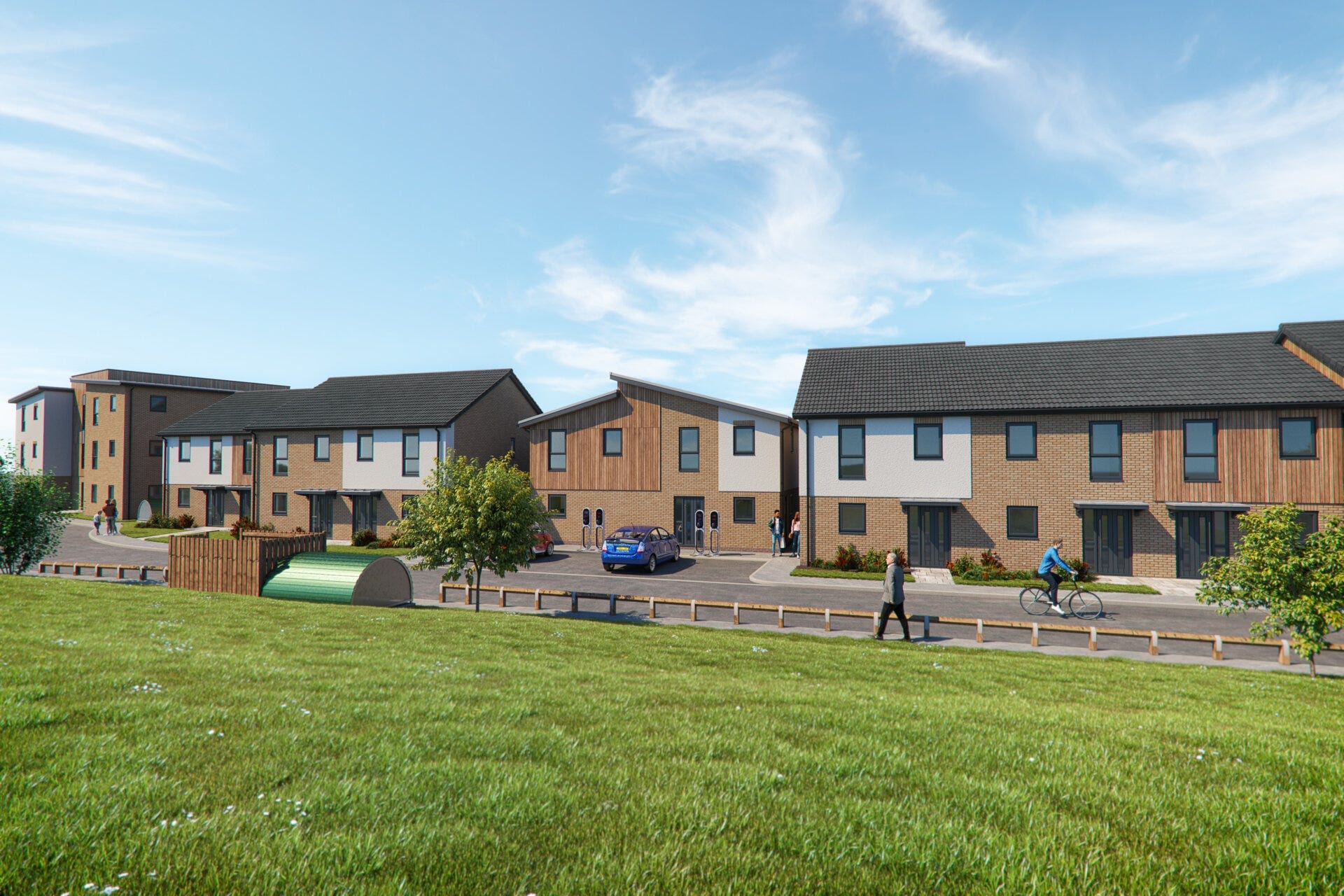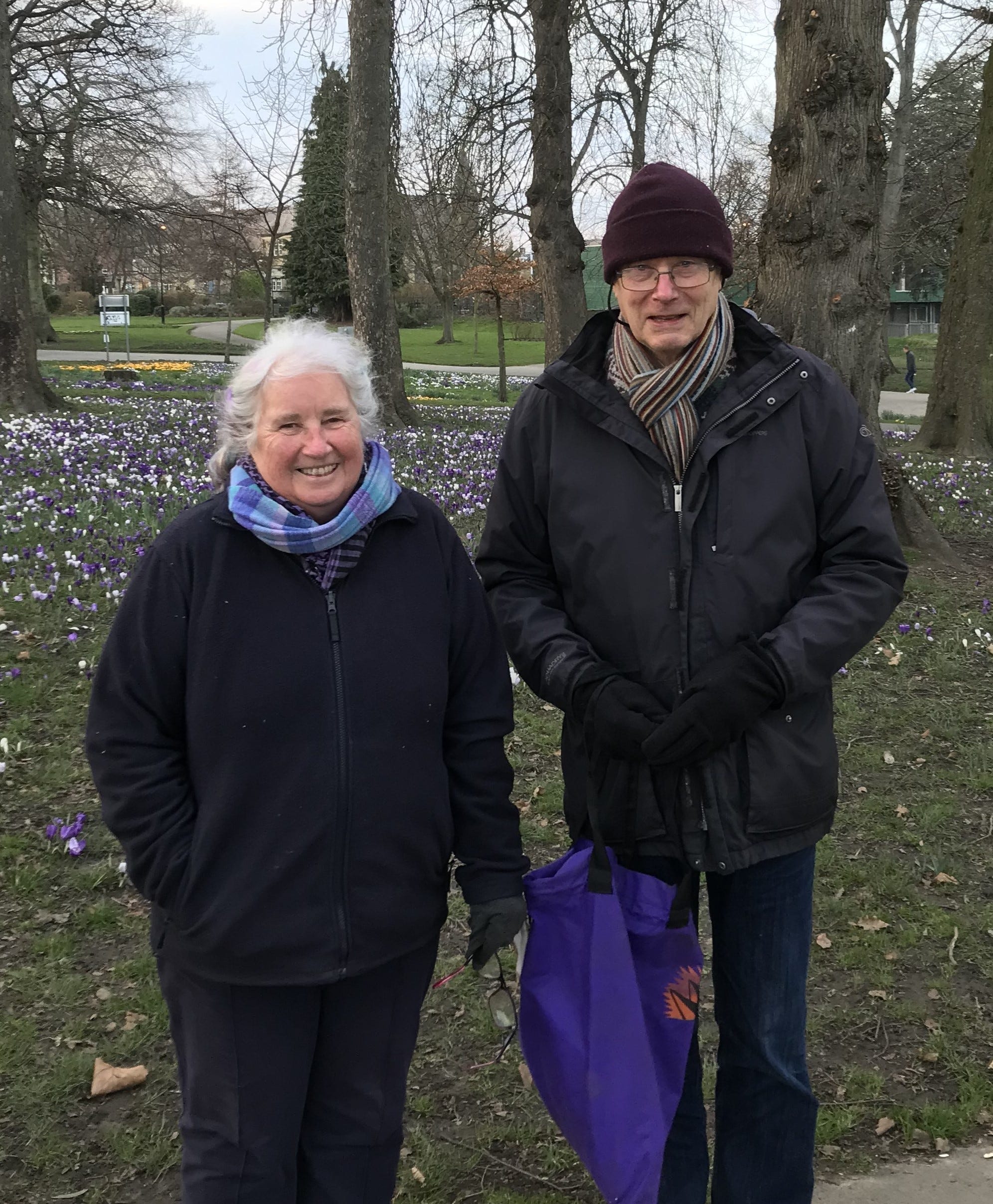At this time of year, the icy wind coming down the valleys of western Sheffield from the Peak District can feel almost hurtful. Being near some of the city’s most beautiful countryside is one of the big pluses of living on this side of town — but the disadvantages are that it can feel slightly chilly from time to time. I’ve come here to find out about a fascinating new cohousing development being set up in the area. But at the moment all I can think about is that I wish I’d put on another jumper.
My first impression, other than the icy cold, is that where I am seems like a fairly unlikely place for a pioneering housing experiment to take place. Wisewood is a working-class neighbourhood in the north west of Sheffield, just up the road from Hillsborough. The houses here are mainly interwar semis with a few bits of new build thrown in here and there. The site on which the new cohousing development will be built is a former recreation ground called Spider Park which is currently utilised more for anti-social behaviour than wholesome play.
I’m here to meet one of the founders of Five Rivers Cohousing, a group set up in 2012 to establish a semi-communal housing project in Sheffield. Cohousing developments include both self-contained, private homes and shared community space, with residents coming together to manage their community, share activities, and regularly eat together. The model is billed as a way of resolving the social isolation many experience today, and recreating the neighbourly support of the past.
Meeting me at the junction of Ben Lane and Sevenfields Lane is Teri Connolly, who has been involved with Five Rivers since its inception. Now in her late 60s and semi-retired, she tells me what attracted her to cohousing in the first place. “Ultimately, it’s about pulling together, swapping skills and helping each other out,” she says. The idea is that younger people in the community will help older residents with things like heavy lifting, on the understanding that they will get help back in future, for example in terms of childcare when needed. This will also help Teri and her partner “futureproof” their older age, she says, meaning they can utilise the resources of their shared community rather than constantly pestering their grown up children.

Walking down to the site takes you past a covered reservoir on the left and a retirement community on the right. The hulking mass of the reservoir has the effect of hiding Spider Park from the road, which is why it has become attractive for the young people who now use it. The park is named after the spider-style climbing frame that used to be its centrepiece. But the frame is now long gone and all that is left is a bench, two metal goalposts and an underutilised patch of grass. The retirement community are keen to have new neighbours rather than the no go area after dark that they currently have.
As we wander around the grassy plateau, Teri points out where the 22 units that will make up the site will be (“a two-bedroom house here, a one-bed flat there”). When complete they will all be arrayed in one long row, which broadly resembles a terraced street. In the middle of the long row is the “Common House”, which will be the centrepiece of the development, both physically and conceptually. Each person or family group will have their own private space, but will also be expected to play a full part in the community by sharing meals, and taking part in community events in the communal areas.
The development has been planned for 10 years, but they are finally at the stage where they are about to see work start. The first spade will go in the ground in early December and work will be complete in around a year’s time. They have almost filled all the units, but still have a couple left available for people to snap up.
As we decamp to the nearby Riva cafe to escape the chill, Teri tells me how Five Rivers came about. I was under the impression that what they were doing was unique in Sheffield, but it turns out I was wrong. In the last 10 years, two other cohousing projects have been set up in the city, both in Nether Edge. However, all of them have come out of one group of likeminded people who started thinking about more sustainable ways to live around 12 years ago. Two groups have since set up cohousing schemes at former NHS sites at Shirle Hill and Brincliffe Edge. Five Rivers in Wisewood will be the third.

Teri and her colleagues looked at a number of sites before deciding on Wisewood. The Sheffield-based developer Oakworth Homes already had plans to build 10 four-bedroom houses on the site. However, when Five Rivers approached them and asked if they would be prepared to build something more innovative on the site, they decided to change their plans. Like most housebuilders, Oakworth had previously concentrated on large luxury homes, which tend to give them the best returns on their investment. However, perhaps sensing a change in the mood towards more sustainable ways of living, they agreed instead to work with Five Rivers.
Teri tells me the model of co-housing is sometimes also called an “intentional community” — a way of building social cohesion and teamwork into housing developments from the beginning rather than just hoping for the best. “If you buy a house you might get a really great street where there is lots of sharing, but it’s potluck,” she says. “This is about creating that from the start.”
The model is still something of a novelty in the UK, but it is widely used elsewhere. The first cohousing community was built in Denmark in 1972, and 1% of the Danish population, about 50,000 people, lived in cohousing in 2019. In Germany the idea is also widely adopted with over 150 schemes in Berlin alone. And in the United States — where the first cohousing community was set up 25 years ago in Davis, California — there are already 160 cohousing projects set up in 25 states with another 125 currently being developed.
Now that the bricks and mortar of the development is on the way, how are they going to select who is involved? Do they have an interview process, I ask? Not as such, but there is a “getting to know each other” period for prospective members, which Teri somewhat sheepishly tells me they call “Five Steps to Five Rivers”. And all current members have to agree before someone new is accepted. But more than anything, they just want people who “buy in” to the idea of cohousing. For Teri, there is no point living in a shared community if you are just going to spend all of your time squirrelled away in your own place.


Katherine Bessey, 39, first heard about Five Rivers around a year ago and is planning to move in with her partner Richard and their four-year-old son next year. She tells me she was Googling alternative ways of living when she came across a podcast about cohousing and shortly after found the scheme in Sheffield. After researching it further, she was attracted to the concept of sharing resources rather than everyone needing their own thing, and also loved the idea of living in a community where everyone knew each other. In terms of the “interview process”, she admits to being nervous beforehand, but says anyone interested in joining the scheme shouldn’t be. ”It’s more about showing a bit of willing to get involved,” she says. “It was very informal.”
And also moving in next year will be Ruth Holtom, 32, and her partner Daniel. They have lived in a number of communal set-ups in London throughout their 20s and wanted something similar for when they relocated to Sheffield. “It’s certainly not for everyone and there are some people I certainly wouldn't want to do it with,” she tells me. “But if you find the right people then it can work.” Ruth and Daniel have bought one of the three-bedroom houses, which will give them a generous piece of personal space. But they’re also very keen to use the shared parts of the project, its eco-features and its multi-generational ethos as a way of creative sustainable community. “Having big meals together and sharing resources rather than everyone having all their own property just aligned with the way we wanted to live,” she says.
Like Ruth and Daniel, Teri says many of those involved have lived communally at some point in the past. She and her husband shared a house in London when they were younger, while another member lived for a time in the well-established Quaker community in Bamford. This has led to worries among some that membership of the group could be too homogenous, with many of them tending to be either active members of the Green or Labour parties in Sheffield. “Most of us seem to have been in the Sheffield Socialist Choir at some point,” she jokes.
There have also been concerns that the group could end up being too middle class, or too white, something they wanted to avoid. One of the ways they have tried to combat this is by building in a traditionally working class area like Wisewood, and by making the properties both affordable and available on a range of tenures, including rental units. They are also still in discussion with Sheffield City Council about making two of their units available under a shared ownership scheme.

As well as the right mix of people, there also needs to be rules that everyone signs up to. This is understandably something they have been thinking about for some time. A transport policy has been drawn up focused on having a pool of shared cars rather than owning them outright. But they also need to allow residents enough time to transition from one to the other. Also, what do they do about pets? They don’t really want 22 dogs in the community but they equally don’t want to tell people they can’t move in if they have one. All these things need to be decided between now and when they move in.
But some disagreements are inevitable. Teri tells me they have received a lot of help from the other cohousing projects in the city, who they are still close friends with. Advice from them includes — somewhat surprisingly — limiting the number of decisions that are made collectively (for example, don’t allow people a range of choices on minor decisions like door handles — it’s best just to pick one). However, many things they will have to work out themselves, meaning a dizzying array of committees, management groups and executive bodies have been set up. Their AGM (it is a limited company) takes place in the next couple of weeks.
Teri, whose background is in counselling, tells me that most of the members have skills in promoting communication and reducing conflict, but she also acknowledges that moving from theory to practice will involve a huge leap. “There is a lot of anxiety as well as excitement,” she tells me. “It’s great fun thinking about our new community — but we also know our first big argument will happen at some point.”
If you’re interested in joining them, you still can. There are still two units going spare at Spider Park, a three-bedroom house and a one-bedroom flat. For those interested in exploring different ways of living, and who don’t mind a chilly wind from time to time — you could be just the person they’re looking for.
To find out more about Five Rivers Cohousing, visit their website.
Comments
How to comment:
If you are already a member,
click here to sign in
and leave a comment.
If you aren't a member,
sign up here
to be able to leave a comment.
To add your photo, click here to create a profile on Gravatar.







